In 1931 a devastating earthquake of 7.8 magnitude flattened Napier, destroying nearly every building in the town. Shortly afterwards, fire ravaged the town. 256 people died in the earthquake and it remains New Zealand’s worst natural disaster. In the museum the story of the earthquake and its aftermath is vividly recounted in filmed interviews with people who were there. One is the story of a survivor who, immediately afterwards, stole a camera and some film from a destroyed shop and took lots of pictures. It was his daughter telling the story and it is because of him, and his quick thinking, that there are so many vivid images of Napier.
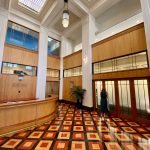
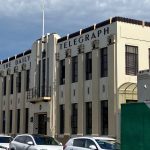
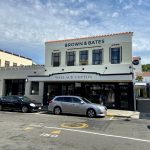 It was important that Napier picked itself up and began to function as a town again, so a Napier Reconstruction Committee was formed and it was they who decided that the Art Deco style was the quickest and easiest to construct, as well as being the cheapest. This also included a street widening project. Within a year of the quake, Art Deco buildings sprang up all over the city. Today, their distinctive style has caused Napier to be known as the Art Deco capital of the world.
It was important that Napier picked itself up and began to function as a town again, so a Napier Reconstruction Committee was formed and it was they who decided that the Art Deco style was the quickest and easiest to construct, as well as being the cheapest. This also included a street widening project. Within a year of the quake, Art Deco buildings sprang up all over the city. Today, their distinctive style has caused Napier to be known as the Art Deco capital of the world.
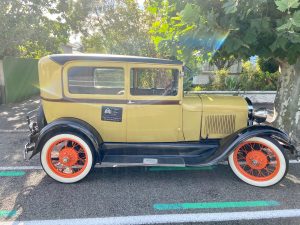 In line with the building style, Napier is also home to a great many vintage cars and, on the morning after our arrival, two turned up to our house to take us on a tour of the city and its surroundings. I’m not entirely a fan of Art Deco. I suspect it is because, most of the time, we only see the occasional building built in that style To see a whole Art Deco town, I concede that the style has a certain charm, geometric patterns, symmetry and clean lines. To be escorted in a vintage car also makes it so much more appealing.
In line with the building style, Napier is also home to a great many vintage cars and, on the morning after our arrival, two turned up to our house to take us on a tour of the city and its surroundings. I’m not entirely a fan of Art Deco. I suspect it is because, most of the time, we only see the occasional building built in that style To see a whole Art Deco town, I concede that the style has a certain charm, geometric patterns, symmetry and clean lines. To be escorted in a vintage car also makes it so much more appealing.
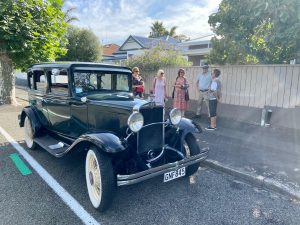 The tour took us to various sites and our two drivers, Lesley and Bob, were full of stories told in a very characterful, down to earth way. The girls all went with Lesley in a mustard coloured 1928 Ford Model A called Buttercup and John and I travelled with Bob in a 1931 Chevrolet Independence called Millie. They looked superb but, without power steering and slick gear change, they were not the easiest cars to drive. When pulling out on to a main road, extra care had to be taken because they did not respond quickly. They were not that comfortable, and certainly not very easy to get in and out of. I felt that I was lacking the elegance that the architecture and car design deserved!
The tour took us to various sites and our two drivers, Lesley and Bob, were full of stories told in a very characterful, down to earth way. The girls all went with Lesley in a mustard coloured 1928 Ford Model A called Buttercup and John and I travelled with Bob in a 1931 Chevrolet Independence called Millie. They looked superb but, without power steering and slick gear change, they were not the easiest cars to drive. When pulling out on to a main road, extra care had to be taken because they did not respond quickly. They were not that comfortable, and certainly not very easy to get in and out of. I felt that I was lacking the elegance that the architecture and car design deserved!
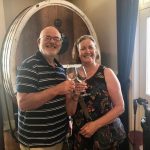
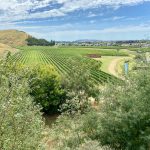
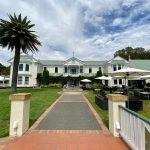 Although it was not on our tour itinerary, we persuaded Lesley and Bob to take us to the Mission Estate vineyards for a tasting session. At the side of the drive, leading up to the house, a stage was being erected in preparation for an Elton John concert. It was a great venue with a sloping, grassy, open air auditorium, unless it rained, of course. With the settled weather we were experiencing, that was unlikely.
Although it was not on our tour itinerary, we persuaded Lesley and Bob to take us to the Mission Estate vineyards for a tasting session. At the side of the drive, leading up to the house, a stage was being erected in preparation for an Elton John concert. It was a great venue with a sloping, grassy, open air auditorium, unless it rained, of course. With the settled weather we were experiencing, that was unlikely.
For a fee of $10 each we tasted six wines; really good value. The wine wasn’t bad either and John came away with a couple of cases to keep us lubricated for the rest of the trip.
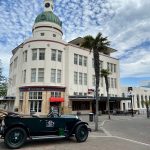
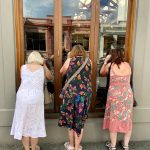
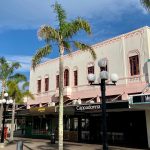 At this time news was filtering through that there had been devastating storms in Fiordland on the southern end of South Island. Reports were suggesting serious flooding and infrastructure damage. We heard that the road to Milford Sound had been swept away, preventing any form of public access for some time. Several hundred people were stranded there, unable to get out. We would not be able to do our cruise on Milford Sound. The southern section of the Routeburn Track had been hit by a number of landslides and it would be closed for the rest of the season. This meant that part of our itinerary was unachievable and the accommodation that went with it. I would have to come up with some alternative activities.
At this time news was filtering through that there had been devastating storms in Fiordland on the southern end of South Island. Reports were suggesting serious flooding and infrastructure damage. We heard that the road to Milford Sound had been swept away, preventing any form of public access for some time. Several hundred people were stranded there, unable to get out. We would not be able to do our cruise on Milford Sound. The southern section of the Routeburn Track had been hit by a number of landslides and it would be closed for the rest of the season. This meant that part of our itinerary was unachievable and the accommodation that went with it. I would have to come up with some alternative activities.
With a list of people to contact for refunds and alternatives buzzing around in my head, we set off, the next day, on the drive to Wellington.

